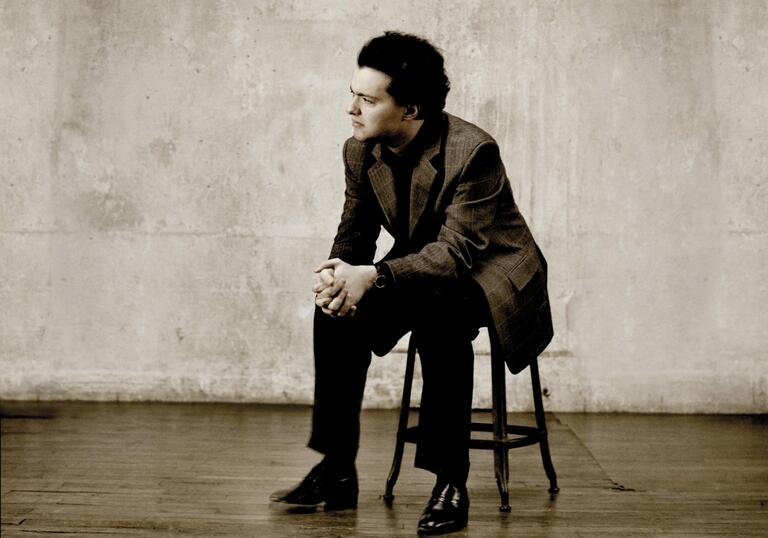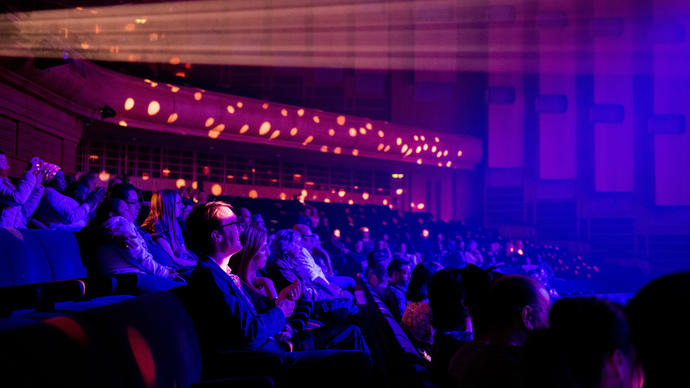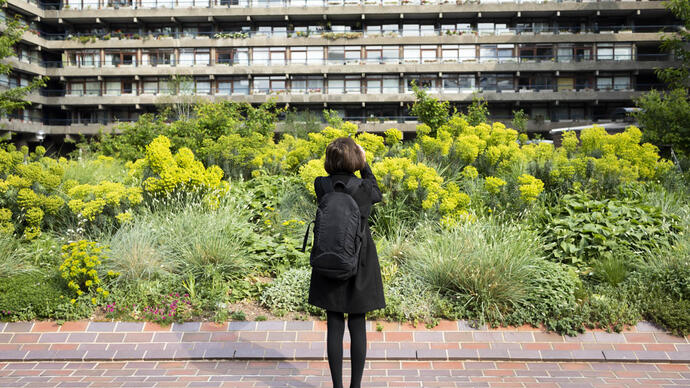
Programme and performers
Ludwig van Beethoven Piano Sonata No 27 in E minor
1. Mit Lebhaftigkeit und durchaus mit Empfindung und Ausdruck [Vivaciously and with feeling and expression throughout]
2. Nicht zu geschwind und sehr singbar vorzutragen [Not too quickly and very songfully]
Frédéric Chopin Nocturne in F sharp minor, Op 48 No 2
Fantasy in F minor, Op 49
Johannes Brahms Four Ballades, Op 10
No 1 in D minor
No 2 in D major
No 3 in B minor
No 4 in B major
Sergei Prokofiev Piano Sonata No 2 in D minor
1. Allegro, ma non troppo
2. Scherzo: Allegro marcato
3. Andante
4. Vivace – Moderato – Vivace
Evgeny Kissin piano
Evgeny Kissin
Russian pianist Evgeny Kissin is revered the world over by audiences and critics alike for the virtuosity and eloquence of his pianism and the imagination and insight of his interpretations. He has worked with the world’s leading orchestras and conductors, including Vladimir Ashkenazy, Daniel Barenboim, James Levine, Riccardo Muti, Seiji Ozawa and Sir Antonio Pappano.
He was born in Moscow in 1971 and began to play by ear and improvise on the piano at the age of 2. At 6, he enrolled at Moscow’s Gnessin School, where he received lessons from Anna Pavlovna Kantor, who became his only teacher.
At the age of 10 he made his concerto debut with Mozart’s Piano Concerto in D minor, K466 and he gave his first solo recital in Moscow a year later. His international breakthrough came in 1984, when he performed Chopin’s piano concertos in the Great Hall of the Moscow Conservatory with the Moscow State Philharmonic conducted by Dmitri Kitaienko. This concert was recorded live by Melodiya, and a two-LP album was released the following year.
He gave his first performance at the BBC Proms in 1990 and made his North American debut soon after, performing Chopin’s two piano concertos with the New York Philharmonic and Zubin Mehta. He opened Carnegie Hall’s centennial season in September 1990 with a debut recital, the live recording of which proved an exceptional success.
His discography also includes a Grammy Award-winning album of solo works by Scriabin, Medtner and Stravinsky; Beethoven’s complete piano concertos with the London Symphony Orchestra and Colin Davis; a Grammy Award winning recording of Prokofiev’s Piano Concertos Nos 2 and 3 with the Philharmonia and Vladimir Ashkenazy; and discs devoted to solo works by Brahms, Chopin and Schumann. In 2017 he signed a new exclusive contract with DG, an event marked by the release of a double-disc set comprising live recordings of popular sonatas and other piano works by Beethoven.
Recent highlights include returns to the Vienna Philharmonic under Jakub Hrůša, London Symphony Orchestra under Sir Simon Rattle and the Hamburg and Warsaw Philharmonic orchestras under Kent Nagano and Andrey Boreyko respectively. He has also embarked on a recital tour of Europe and North America with Renée Fleming, performing in Vienna’s Musikverein, Théâtre des Champs-Élysées in Paris, Amsterdam Concertgebouw, Lucerne’s KKL and La Scala, Milan, the Kennedy Center, Washington DC, Chicago, Gilmore Festival and at Carnegie Hall, New York. He has toured to North America with a solo recital of Bach, Mozart, Debussy and Rachmaninov; and appeared at a gala concert in memory of Andrei Sakharov at Carnegie Hall.
Evgeny Kissin’s achievements have been recognised with many prestigious awards and prizes. These include the Shostakovich Award (2003), Honorary Membership of London’s Royal Academy of Music (2005), the Herbert von Karajan Music Prize (2005), the Arturo Benedetti Michelangeli Award (2007), and honorary doctorates from the Manhattan School of Music (2001), University of Hong Kong (2009), Hebrew University of Jerusalem (2010) and Ben- Gurion University of the Negev (2014).

Our Patrons and supporters
Find out about our Patrons, who help us keep our programme accessible to everyone and allow us to continue investing in the artists and communities we work with.
Love the arts? Become a Patron to engage more closely with our programme.

Who we are
Meet our management team, our Board and the Trustees of our charitable arm, Barbican Centre Trust.
